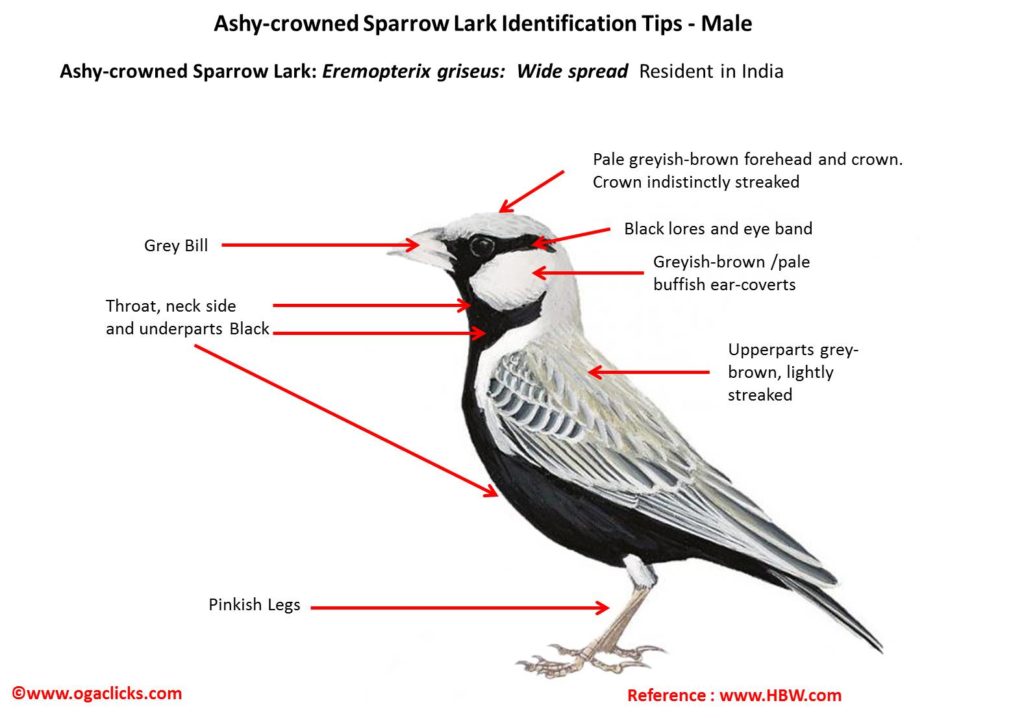
Ashy-crowned Sparrow Lark Eremopterix griseus
Etymology:
- Eremopterix : Greek word eremos- desert ; pterux – wings
- Griseus : French word for Grey derived from gris –grey
Vernacular names : Hindi: Diyora, Duri, Slaty-sir Deoli, Dabak chiri, Jothauli, Pun: Saleti sir-chandol, Mirshikars: Gotowli, Ben: Math charai, Dhula chata, Guj: Bhon chakli, Rakhodishir bhonya chakli, Ta: Manam vanambadi, Te: Poti pichika, Piyada pichika, Ambali jorigadu, Mal: Karimpandi, Sinh: Gomaritta, Mar: Dombari, Chiman Chandol
Distribution in India: Widespread resident in India.
Description: Size of 11-12 cm. The adult male has pale greyish-brown forehead and crown , the forehead is often paler and crown indistinctly streaked. They have black lores and eye band, pale greyish-brown or pale buffish ear-coverts, grey-brown nape; upperparts are grey-brown, lightly streaked, upperwing-coverts, tertials and flight-feathers are darker with pale edges, pale tips; underwing-coverts blackish; tail blackish-brown or dark grey-brown, central feather pair paler, outermost pair dusky grey-brown, outer two pairs with off-white outer web; throat, neck side and underparts blackish, narrow whitish band on breast side and flank; bill grey; legs pinkish. The adult female lacks black on the head and underparts but has blackish-brown underwing-coverts. It is grey-brown and faintly streaked above, with indistinct buffish supercilium, pale crescent behind grey-brown ear-coverts, buffish below, breast is indistinctly streaked dark.
Habitat: It is found in dry open habitats with scattered low vegetation, from sea-level up to 1000 m.
Food Habits: It eats seeds and small Insects. It forages on the ground, usually alone or small groups.
Breeding Habits: They breed in Feb-Sept in Peninsular India .The mating display of the male consists of a song flight that involves soaring up with some chirruping calls and then diving with partly closed wings and then rising up in a glide. This undulating flight is accompanied by a long low whistle at each dive and at the tip of each rise by a sharp “chilp” note. The display ends with the male descending at an angle and landing on a small mound or clod before repeating the performance after a few minutes. The nest is a compact depression under a tuft of grass in the ground lined with grass and hair with some pebbles arranged on the edge. The nest is built by female. They lay a clutch of 2-3 eggs and both males and female incubate the eggs. The eggs hatch after about 13 or 14 days and both parents take turns to feed the young although the female is more active.